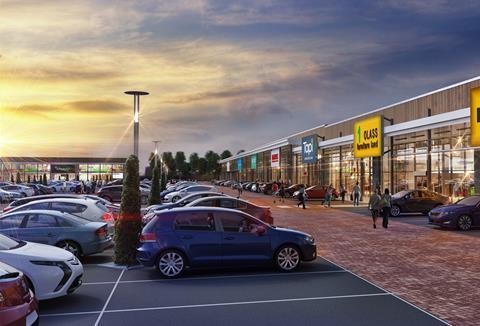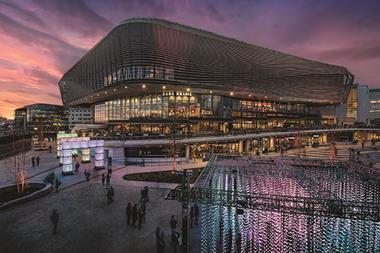Reports of the death of retail parks were greatly exaggerated following negative valuation movements which hit last year in the wake of Brexit.

In the immediate aftermath, investors moved to increase liquidity and closed-ended funds attempted to meet redemption requests, with a particular focus on transactions in smaller lot sizes, accentuating valuation declines for larger assets.
It’s clear that the sector has fallen out of favour with investors, but I would argue that the fundamentals call for closer inspection.
The sector continues to benefit from positive structural characteristics, such as traditionally long lease terms and stable returns. Leasing activity has remained buoyant and customer visits to retail parks have continued to outperform national indices.
And these are trends that we have seen across our own portfolio, with footfall up 2.2% during 2016, customer dwell times increasing 8% and record low vacancies across the portfolio.
The retail park format is morphing into something which more closely resembles a shopping centre experience
Indeed, despite macro-economic turbulence, the strength of underlying occupier and consumer markets has defied the critics, demonstrating the resilience of the sub-sector.
Arguably, the resilience of the sector lies in its ability to adapt to changing trends and deliver relevant shopping destinations in locations where demand is high. The obvious advantages of easy car access and free parking provide retail parks with a convenience factor that is difficult to replicate elsewhere.
The success of click & collect lockers drives additional footfall and sales at out of town parks, and typically larger store footprints allow tenants to capitalise on the growth of multichannel retailing.

Of course, active asset management remains a key factor; landlords must ensure that the retail line up is both compelling and fresh in order to keep shoppers returning. A close alignment with the local demographic is important, and the consumer is becoming ever more demanding.
As a result the format is morphing into something which more closely resembles a shopping centre experience, albeit one that still benefits from the convenience factors characteristic of traditional retail parks.
Sub-sector focus
A major factor in our success is our disciplined focus on the sub-sectors which demonstrate the highest growth and returns potential, namely shopping parks, key homewares and hybrid parks. Close to 90% of our retail parks portfolio is now weighted towards these popular segments, far outstripping the rest of the market.
This is why we are confident in the outlook, so much so that we are devoting a great deal of our development activity in the current year to our retail parks.
We are committing close to £100m worth of investment to four extension and redevelopment projects, and with relatively quick construction periods, we are already on-site at all four at Didcot in Oxfordshire, Fife Central in Kirkcaldy, Park Tawe in Swansea and - most recently - the exciting second phase of our Elliott’s Field redevelopment in Rugby.
This extension to the fashion-focused shopping park will feature a number of homeware brands, and we already have several tenants lined up to take space including Tapi, Oak Furniture Land and Sofology, catering to demand from the growing housing market in the area.

New entrants to the homewares market are turning the sector on its head. Traditionally seen as big ticket items which suffered during periods of economic uncertainty, the latest brands are introducing clever marketing initiatives to demonstrate to customers that they can afford high ticket items at low ticket prices.
Zero per cent interest deals have been around for a number of years, but heavily promoting the monthly instalment - often as low as £15 per month for a new sofa - widens the potential customer base. As a result, the homewares category has been one of the best performers in the sector.
And with healthy pre-letting activity and strong interest from retailers keen to develop their exposure to this convenient market, it’s not hard to see why these developments - which are anticipated to return a yield on cost of 8% - make sense within a well-diversified retail portfolio.






























No comments yet